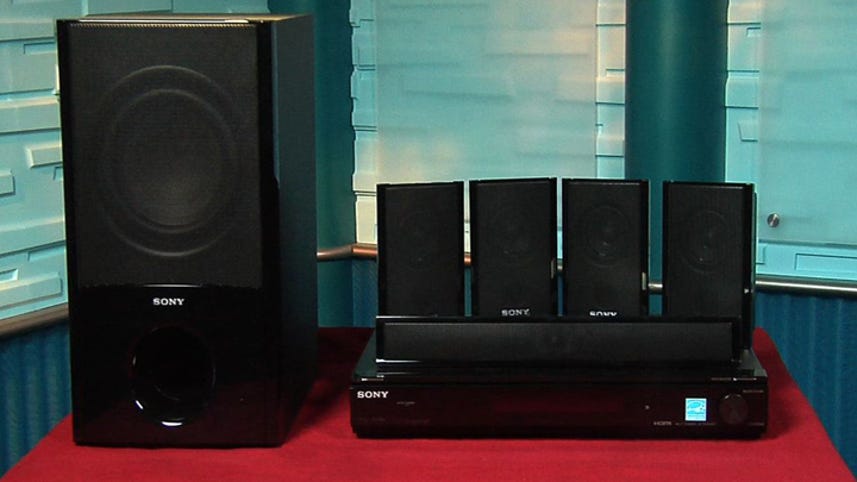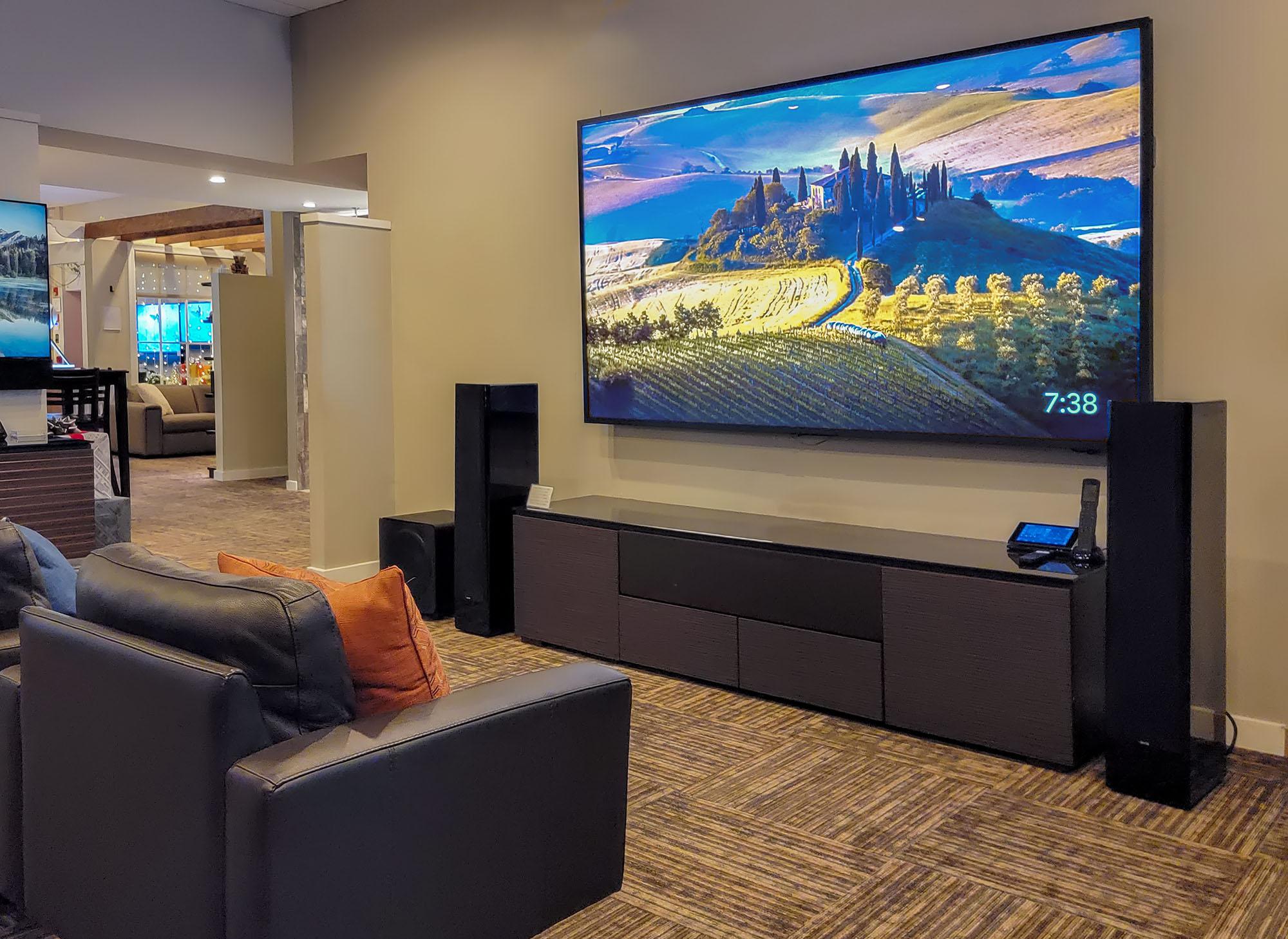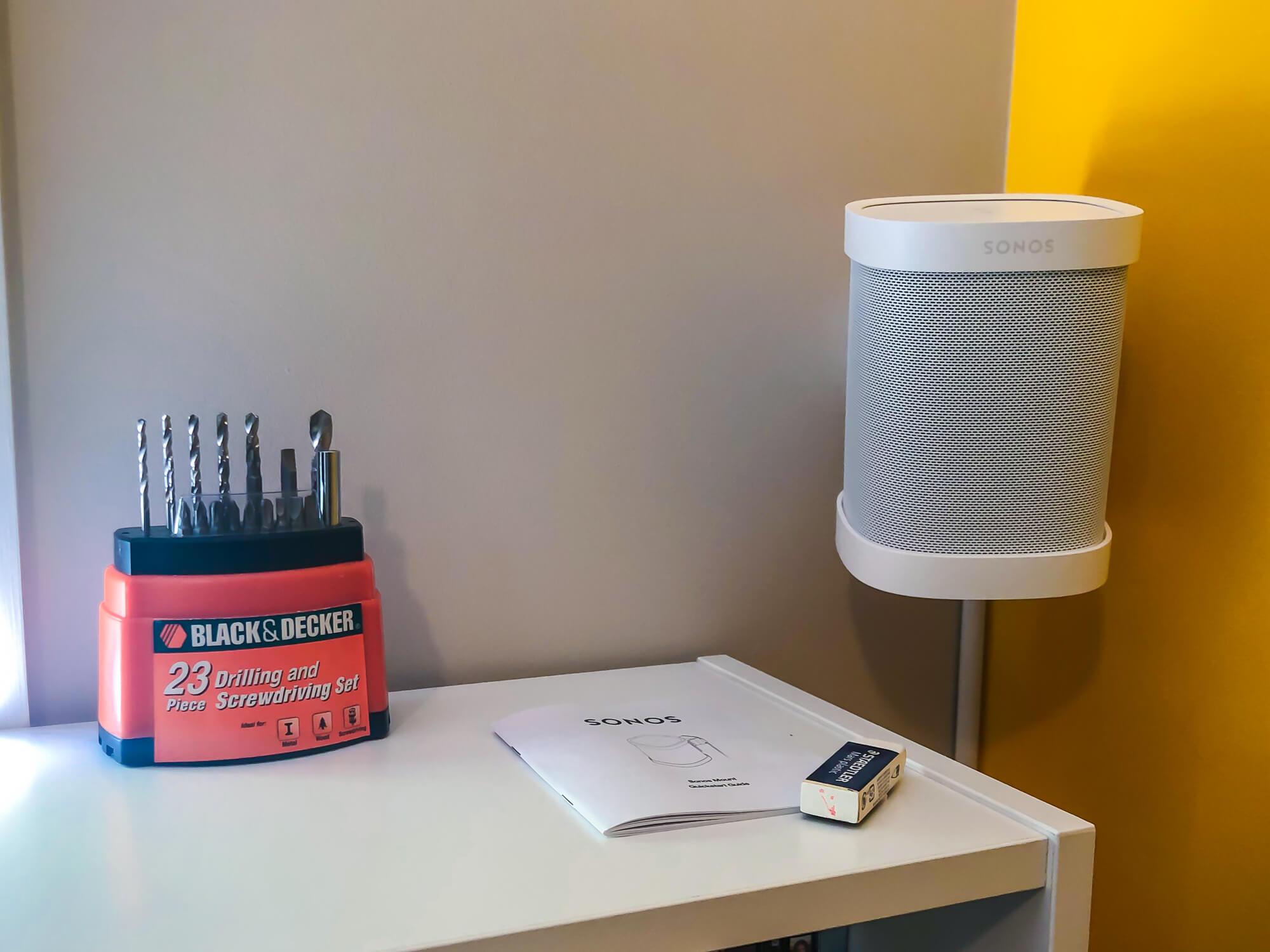
Sonos, a brand that is all about audio, has some of the most impressive speakers in the market. Sonos began as a software company. It has since evolved into an integrated ecosystem that connects Wi-Fi devices to play music and TV in every room.
With the help of an app, Sonos makes it easy to set up multi-room systems. Whether you're using an iPhone, iPad or Android device, it only takes a few minutes to get started and start playing songs in sync across all your Sonos products, in all the rooms of your home.
The Sonos Play:1 is the entry-level speaker in the Sonos range, but it can still pack a punch. It's one of the most affordable and best-sounding smart speakers you can buy, thanks to Sonos' Trueplay technology, which tunes your music to your environment.

The speaker is available in two colors: black and white. It has a grated design that covers the entire top of the speaker. It can be placed on a bookcase or on a desk and doesn't take up much space. The speaker is simple and elegant.
The Sonos app can be used to control your Play:1 from your phone. That's a nice feature. Sonos supports streaming services such as Spotify, Apple Music, YouTube Music, and YouTube Music. You can also add another Play:1 to your Sonos network, and use Trueplay for a stronger sound.
How to set up the Sonos Play
Before you can begin playing music with your Play.1, you must connect it to your router. Open the Sonos application on your phone or tablet. Next, connect to your Wi Fi network. Next, you'll need your network name as well as a password.
Once you're connected to the Sonos Play:1, it'll show up in the app as an available speaker, and you can start setting it up. It is somewhat annoying that it must connect to your WiFi router. However, the Sonos apps does a great job of getting you started quickly.

Sonos recently updated their "S2" app in support of Play:1 speakers. They no longer require a separate bridge to communicate to your network. This allows them to connect directly to your Wi Fi, which is a significant improvement for the product.
Although the Sonos Play:1 is a well-known speaker, it has received significant upgrades that make it an attractive choice for those who are looking for great sound and a variety of streaming services. The software has been improved and Trueplay is included. There are also more streaming services available than ever.
This speaker is great for those who don't want to use Alexa or Google Assistant but still want a smart speaker. It can also be used by people who wish to future-proof their Sonos setup. It's also a great option for people who want to buy a Sonos Play:3 but aren't keen on the lack of AirPlay 2 or voice assistant capabilities.
FAQ
Which is better stereo or 5.1 surround sound?
Stereo is great for movies, music, and other media. Surround sound is more engaging and immersive when used in home entertainment systems. If you've been watching TV lately, you might have noticed that the sound quality has improved dramatically.
Surround sound allows you hear sounds from many directions simultaneously. This creates a space where each channel adds depth, dimension and dimension to the overall experience.
The surround sound can also help create a sense that you are in a place. It can feel like you're right there with the action. You can focus the audio in any direction by placing speakers in various locations around the room, giving the illusion of being there yourself.
Surround sound allows for a more natural listening experience. While listening to music or watching a movie, surround sound makes it easier to listen. Surround sound can cause you to lean forward and backward in order to find the ideal position.
Surround sound provides a richer and more detailed experience. So if you're planning on upgrading your home theater system, make sure you use surround sound instead of stereo.
What are my options for choosing a home theatre system? What are the most important factors to consider when choosing a home theater system?
There are many types of home theater systems available. Each type has its pros and cons.
For example, a surround sound system with 5.1 speakers will have five channels: two front left-right, center, and subwoofer, one rear left-right, center, and center channel, and one tweeter. You will hear clear dialogue through the speakers on the left and right, and you'll also get rich, deep sound from the subwoofer or center channel.
This arrangement is preferred by some people because they can hear every word in the movies. Others enjoy watching movies with loved ones and people who have different tastes in music.
Remember to buy a home theater system that fits your needs regardless of your choice.
Consider, for instance: You might decide that music will be your main source of entertainment and you don't want to watch TV. If this is the case, you may opt for a wireless stereo instead of a surround-sound system.
Another factor to consider is whether you want a flat or curved screen. Flat screens are easy to install because they don't curve at the edges.
They are however not very comfortable to view images on. Curved screens offer a wider viewing angle and are more comfortable.
However, professional installation is required to install a curved screen. Ask your dealer to provide a warranty on your new TV if you plan on buying it.
When you are choosing a home theater system, the first thing to consider is the space that will house it.
Larger rooms will require larger speakers. For example, a 6 1/2-foot wide by 8-foot tall room would require speakers with a width of 3 feet and a height of 4 feet.
Keep in mind, however, that bigger speakers tend to be more expensive. Make sure to budget appropriately if you are going to install your home theater in a larger space.
Do not forget to include any other entertainment system you may be considering purchasing. It might surprise you how quickly home theater costs can escalate!
How do I pick the right size speakers?
It is best to first assess how much space you have within your home. Are you trying to add speakers to every corner? Or, would you rather add just a few speakers to a few key areas?
Consider what type of music you want to listen to. Smaller speakers may be necessary if classical music is your preference. If you are a fan of rock 'n' rolling, larger speakers might be necessary.
Consider whether you want your speakers wired or wireless. To transfer power and signals, wired speakers use wires. Wireless speakers don't require cables. They are however, not as powerful or as reliable as wired models.
What is the best surround sound system wireless for TV?
Wireless speakers are great as you can take them wherever you like, without having to worry about power cords. Even models can wirelessly connect to any device including smartphones, tablets, laptops, and computers.
Wireless speaker systems are often bulky and difficult for people to set up. They also require an amplifier, which can add weight and bulk to the package.
We recommend a wired surround sound system for those reasons. This allows you to position your speakers anywhere you like, while still keeping them out of view.
Look for systems that offer Bluetooth connectivity as well as digital audio inputs, such coaxial and optical connections. Consider adding a subwoofer to your system if you really want to get crazy.
How do I set up my home theater system?
Begin by understanding how sound travels, and how it interacts to objects. This includes understanding how much bass, tone, and midrange frequencies are found in each object.
It is best to listen to music from different devices and note which ones create the most distortion.
Once you identify the distortion levels, you'll know where speakers to place.
They are generally closer together, which results in lower distortion and better fidelity. Placement is also important.
If you want to create a more immersive environment, consider placing multiple speakers within a single room.
You can go an extra mile and surround your self with speakers.
There are two types of speaker systems: passive and active. Passive systems include a subwoofer, and several smaller speakers distributed throughout the house.
They are generally easier to set up because there are no moving parts. They can distort easily if they are placed too close together.
Active systems are composed of a large, mounted woofer directly beneath a TV screen. These speakers are generally the most expensive but produce excellent sound. However, they are not practical for most homes and can run into the thousands of dollars.
You also have the option of buying a receiver that connects active and passive speakers. These receivers include built-in amplifiers, which ensure the audio signal travels evenly to all speakers.
However, these receivers aren't cheap, so unless you plan to replace your entire setup, they might not be worth the investment.
Whatever type of speaker system that you choose, be sure to properly install it.
Ask someone who is able to help you if this is something you don't know!
What are the main differences in speakers?
There are four main types: bookshelf speakers (center channel speakers), subwoofers (subwoofers), and tower speakers. Each has pros and cons. These are some of the major differences among these speakers.
Bookshelves speakers are similar to traditional bookshelves. They typically sit on top or a shelf.
They are smaller versions and variants of full-size cabinet speakers. They will usually be placed next to your couch or recliner on the flooring.
Subwoofers have deep bass sounds. Most people don't notice subwoofers unless they increase the volume of their music.
Tower speakers, which are big boxes that can stand on its own, are often large. These are excellent for creating powerful, stereo sound in large areas.
You can combine any number of speakers into a single system. To create a louder, better sound, it is not unusual to add multiple towers.
What is better a 5.1 system than a soundbar or a soundbar?
The answer is both yes, and no. Yes because it will provide a more immersive experience for home theatre users. You won't be able enjoy watching movies from bed, however.
A home cinema setup needs a whole room for the equipment. It will require a large amount of space and money to put it together.
You don't have to spend a lot of time or effort to achieve the same result.
An alternative to projecting images directly onto the screen, you could use a projector-based setup.
This way you won't require a large TV display. You can instead opt for smaller screens (TVs).
Or, you can put speakers in corners of the room. With these speakers, you'll be able to play music and watch videos without disturbing anyone else.
A soundbar can do just about everything. If you really want to be immersed in a movie you will need a full home theater setup.
Statistics
- Off - All H&R Block Tax Software Finish Line Coupons Finish Line Coupon: 40% off select styles Dyson promo code (wired.com)
- According to a study released In March 2020, the six biggest tech development companies, Proceedings of the National Academy of Sciences of the United States of America (en.wikipedia.org)
- free shipping Samsung Promo Code Take 45% off with a Samsung promo code during Black Friday (wired.com)
- 10% off all sitewide purchases + (wired.com)
- Amazon is likely to release new models very soon (there is an event on September 28), so you should wait until that event is over to buy. (wired.com)
External Links
How To
What should I look for when buying a sound system?
This is the perfect time to upgrade your home theatre system. There are still great deals, even though prices have dropped recently. We've compiled four key factors that you need to keep in mind before making any final decision.
To start, ensure you get the best bangfor your buck. This means choosing a product with the most features for the lowest price. Higher-end options may have better speakers. Therefore, it's important you review the products that are being considered.
Second, think about how much space is available. A small condo or apartment may limit the space you have available to install your system. You may choose to install smaller systems as they won't take up as much space. You don't have to choose the largest model, but if you are planning to watch shows/movies in large groups, you might consider a bigger one.
Keep in mind your budget. If you're planning on installing a whole-home audio system, you'll want to keep the installation cost in mind. Depending on the size of your house, this could add up quickly. If you don't want to make major upgrades, it may be possible to save money and buy pre-installed items.
Consider your lifestyle. Do you listen to music while cooking, reading, relaxing, or exercising? Multiroom systems might be the best choice for you. These setups let you play music throughout multiple rooms simultaneously, allowing you to switch between activities without turning the volume down.